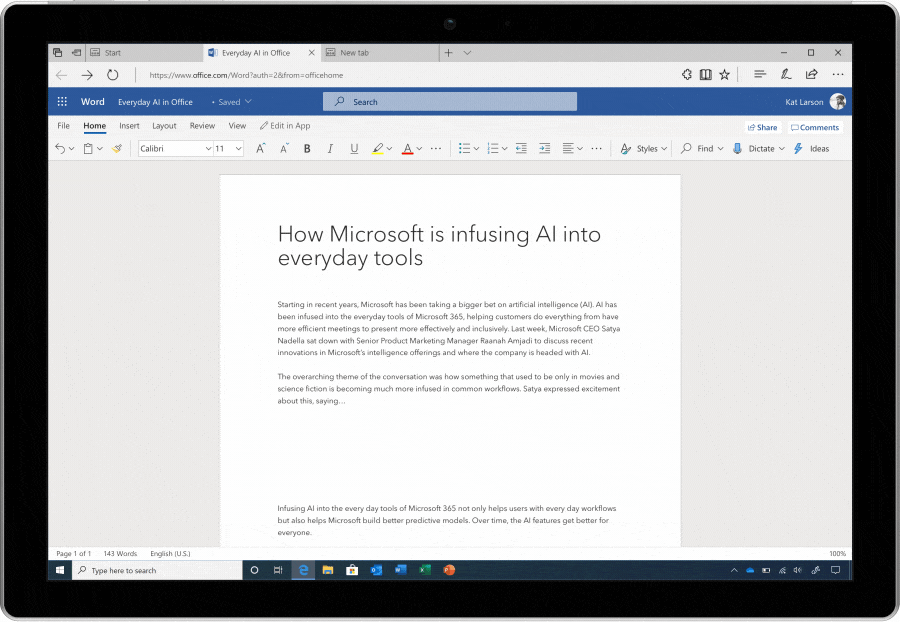Microsoft launched a new transcription service for its online version of Word this week. Transcribe in Word allows users to record live conversations with multiple speakers or upload prerecorded audio or even video files.
Transcription of live conversations takes place in the background and is generally completely quickly. Recordings may be made through a speakerphone, desktop microphone, built-in laptop microphone or through a device's audio output for such sources as YouTube videos or online podcasts. Prerecorded material takes longer to transcribe.
The transcribed text runs along the right side of a Word document, and snippets may be inserted into the document with a simple click. Transcribe for Word distinguishes one voice from another and labels each snippet by speaker. All transcribed segments are time-stamped, making it especially convenient for reporters interviewing a subject or students recording an instructor to quickly and easily locate highlights of their conversations. Editing of transcribed text can be done on the fly.
As Microsoft's group program manager Dan Parish explained, "Your transcript will appear alongside the Word document, along with the recording, which enables you to leverage your transcript to create great content in the way that is best for you. Say you want to pull the perfect quote from an interview to support the main point of your story—just click the plus icon on any line of the transcript and voila, the exact quote is inserted."
The service is currently available only to Microsoft 365 subscribers using the online version of Word. An annual subscription for the single-user version of Microsoft 365 is $69.99; the family version is $99.99. Microsoft aims to make the new feature available on phones and tablets before 2021. It did not mention plans for inclusion on desktop apps.
There is no limit to the number of hours permitted for live audio transcription. But prerecorded audio files are capped at five hours a month. Such files may not exceed 200MB and must be in MP3, WAV, M4A or MP4 format.
Microsoft also unveiled new dictation features that give users more control when editing and formatting dictated text. Users can now say commands such as "Bold last sentence" or "Start numbered list." And it understands natural language commands, so, for instance, if a user forgets the term "ellipsis," saying "dot, dot, dot" instead will get the job done. The same with "and sign" instead of the formal term "ampersand."
Also conveniently, the new Dictation features simplify the sometimes challenging problem of clearly uttering possessives. Instead of struggling with "James's" song, the speaker need only say, "James apostrophe-s song."
Users can also add emojis to their text.
The enhanced features are free to Web and mobile users of Word. Versions for desktop and Mac users are due by the end of the year.
Transcribe in Word competes with the popular app Otter, which offer a real-time streaming transcription service with searchable notes, audio and images. A limited version is free, while more advanced features are included in monthly subscriptions of $8.33 and $20. Otter's maximum time for uploaded audio files is 10 hours monthly, twice that of Transcribe for Word. Google dictation offers a free transcription tool for its Chrome browsers.
More information: www.microsoft.com/en-us/micros … voice-commands-word/
© 2020 Science X Network
























